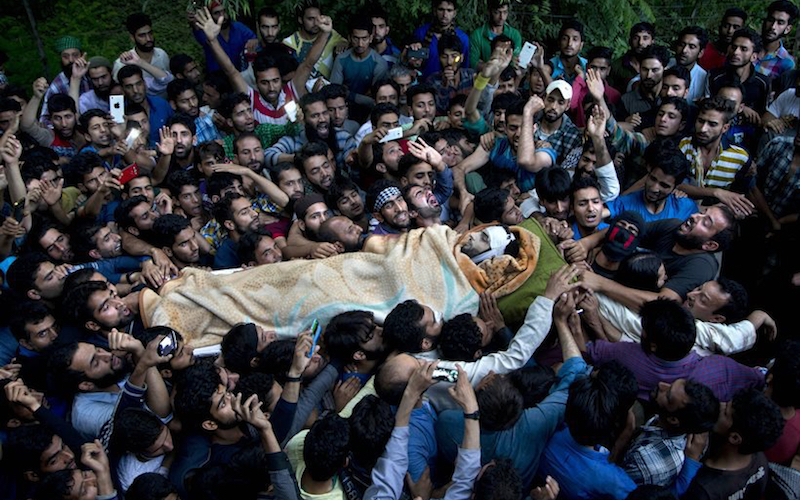
A New Turn in the Kashmir Militancy
“In our religion, whosoever dies because of the oppression from India, or by an Indian bullet, doesn’t die.” – Burhan Wani’s father Muzaffar Wani in conversation with HT
As an Indian, one doesn’t typically hold wide ranging negative views against one’s own nation. But, this is not true in the case of Kashmir. I still remember when Abu Qasim was killed by the security forces in the Kulgam area of South Kashmir and around 20,000 people participated in his funeral. It looked like a superstar rally. In 2013, 31 local youths joined the militancy which by 2016 has risen to 66 according to police records. South Kashmir has become the breeding ground for local youth joining the ongoing militancy movement.
The murder of both Mohmmad Ikhlaq and Zahid Ahmed has clearly incited these new, educated and tech-savvy young people to join the militant groups. The level of atrocities are so regular that the families in Kashmir either openly support their children joining the militants, as in the case Burhan Wani’s father, Muzaffar Wani, or they find a way out to justify it. Clearly, Kashmir is on edge and militancy is driving it to new heights.
When Pakistan was unable to drive more militants across the LoC, the recruitment and training of local youth began. This has been a challenge for the security forces as the influx of youth into militant activities is difficult to track.
Lack of developmental avenues, heavy militarization, no space for political and social expression, lack of political stability and educational and employment facilities have given the locals reason to pick up arms and pursue “Jehad” openly to protest discrimination.
People like Wani and Qasim are the “heroes” as they represent the people’s struggle in the valley, while the Army is still the “outsider.” Stone peltings have increased and people are hosting ISIS flags. There is blockage of the Internet and other communication services. Curfews and bandhs occur regularly for the people in the valley. The failure of successive state governments to negotiate section 370 of the Indian Constitution is one reason the people in valley protest and raise anti-national slogans. There have been regular reports from ground zero about repeated violence, harassment and intimidation by the armed forces stationed in different regions.
The future of ‘fragile’ Kashmir appears to be very unsure. New Delhi must respond to the crisis and the causes of the conflict must be reviewed by the government. One morning, sitting in a dhaba for my morning tea, I heard someone saying “India pehle Kashmir aur uske logon se toh nipat le uske baad ISIS ke baat karenge” (India should first try to deal with the Kashmir issue and then it should think about ISIS).
When the media and social media portrays Wani as “Robin Hood,” the government seems to be on precarious footing.
Those who follow Wani and other militant leaders will not allow the death of their representative go in vain. The death of Wani will be the new rallying and recruitment cry for young people to join the movement started by Wani and other such groups. The killing of Wani by the security forces will give a new dimension to the ongoing militancy struggle/crisis in the valley. Government and security forces should prepare for that!
